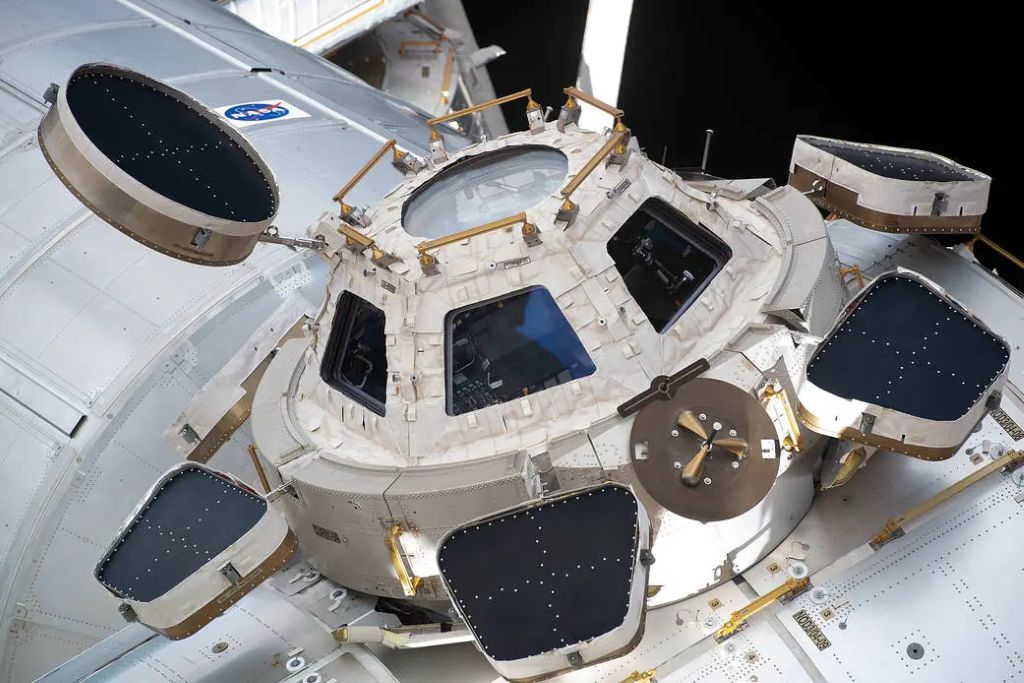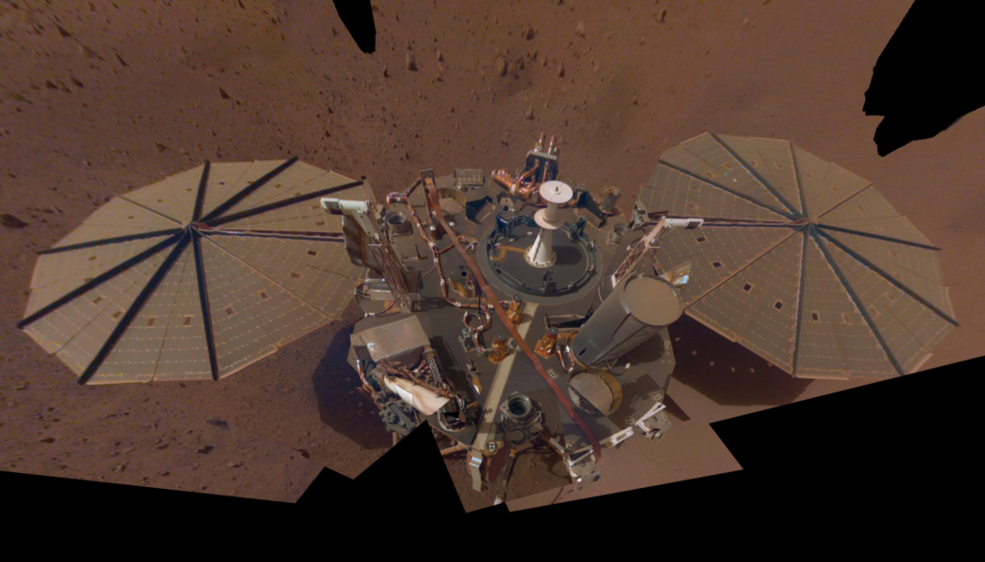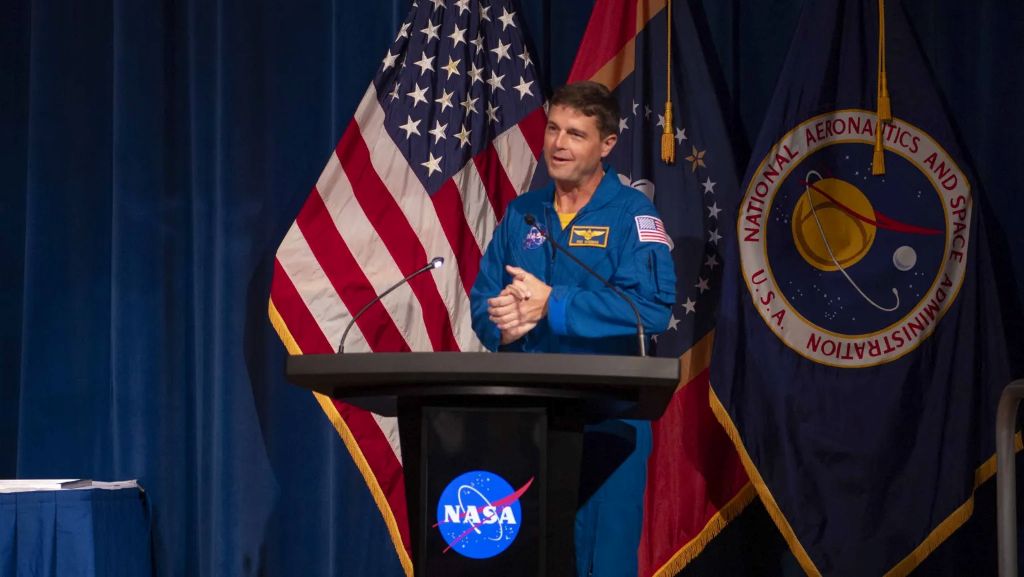NASA’s Webb Opens New Window on Supernova Science

Peering deeply into the cosmos, NASA’s James Webb Space Telescope is giving scientists their first detailed glimpse of supernovae from a time when our universe was just a small fraction of its current age. A team using Webb data has identified 10 times more supernovae in the early universe than were previously known. A few of the newfound exploding stars are the most distant examples of their type, including those used to measure the universe’s expansion rate.
“Webb is a supernova discovery machine,” said Christa DeCoursey, a third-year graduate student at the Steward Observatory and the University of Arizona in Tucson. “The sheer number of detections plus the great distances to these supernovae are the two most exciting outcomes from our survey.”
DeCoursey presented these findings in a press conference at the 244th meeting of the American Astronomical Society in Madison, Wisconsin.
Image A: Jades Deep Field Annotated

The JADES Deep Field uses observations taken by NASA’s James Webb Space Telescope (JWST) as part of the JADES (JWST Advanced Deep Extragalactic Survey) program. A team of astronomers studying JADES data identified about 80 objects (circled in green) that changed in brightness over time. Most of these objects, known as transients, are the result of exploding stars or supernovae. Prior to this survey, only a handful of supernovae had been found above a redshift of 2, which corresponds to when the universe was only 3.3 billion years old — just 25% of its current age. The JADES sample contains many supernovae that exploded even further in the past, when the universe was less than 2 billion years old. It includes the farthest one ever spectroscopically confirmed, at a redshift of 3.6. Its progenitor star exploded when the universe was only 1.8 billion years old.
NASA, ESA, CSA, STScI, JADES Collaboration
Image A: Alternate Versions
- Annotated – max rez, 12k pixel wide (135MB png)JADES Deep Field with transients circled.View (new tab)
- Unannotated – max rez, 12k pixel wide (135MB png)View (new tab)
- Annotated – 4k pixel wide (2.5MB jpg)JADES Deep Field with transients circled.View (new tab)
- Unnnotated – 4k pixel wide (2.5MB jpg)View (new tab)

‘A Supernova Discovery Machine’
To make these discoveries, the team analyzed imaging data obtained as part of the JWST Advanced Deep Extragalactic Survey (JADES) program. Webb is ideal for finding extremely distant supernovae because their light is stretched into longer wavelengths — a phenomenon known as cosmological redshift.
Prior to Webb’s launch, only a handful of supernovae had been found above a redshift of 2, which corresponds to when the universe was only 3.3 billion years old — just 25% of its current age. The JADES sample contains many supernovae that exploded even further in the past, when the universe was less than 2 billion years old.
Previously, researchers used NASA’s Hubble Space Telescope to view supernovae from when the universe was in the “young adult” stage. With JADES, scientists are seeing supernovae when the universe was in its “teens” or “pre-teens.” In the future, they hope to look back to the “toddler” or “infant” phase of the universe.
To discover the supernovae, the team compared multiple images taken up to one year apart and looked for sources that disappeared or appeared in those images. These objects that vary in observed brightness over time are called transients, and supernovae are a type of transient. In all, the JADES Transient Survey Sample team uncovered about 80 supernovae in a patch of sky only about the thickness of a grain of rice held at arm’s length.
“This is really our first sample of what the high-redshift universe looks like for transient science,” said teammate Justin Pierel, a NASA Einstein Fellow at the Space Telescope Science Institute (STScI) in Baltimore, Maryland. “We are trying to identify whether distant supernovae are fundamentally different from or very much like what we see in the nearby universe.”
Pierel and other STScI researchers provided expert analysis to determine which transients were actually supernovae and which were not, because often they looked very similar.
The team identified a number of high-redshift supernovae, including the farthest one ever spectroscopically confirmed, at a redshift of 3.6. Its progenitor star exploded when the universe was only 1.8 billion years old. It is a so-called core-collapse supernova, an explosion of a massive star.
Image B: Jades Deep Field Transients (NIRCam)

This mosaic displays three of about 80 transients, or objects of changing brightness, identified in data from the JADES (JWST Advanced Deep Extragalactic Survey) program. Most of the transients are the result of exploding stars or supernovae. By comparing images taken in 2022 and 2023, astronomers could locate supernovae that recently exploded (like the examples shown in the first two columns), or supernovae that had already exploded and whose light was fading away (third column). The age of each supernova can be determined from its redshift (designated by ‘z’). The light of the most distant supernova, at a redshift of 3.8, originated when the universe was only 1.7 billion years old. A redshift of 2.845 corresponds to a time 2.3 billion years after the big bang. The closest example, at a redshift of 0.655, shows light that left its galaxy about 6 billion years ago, when the universe was just over half its current age.
NASA, ESA, CSA, STScI, C. DeCoursey (University of Arizona), JADES Collaboration
Uncovering Distant Type Ia Supernovae
Of particular interest to astrophysicists are Type Ia supernovae. These exploding stars are so predictably bright that they are used to measure far-off cosmic distances and help scientists to calculate the universe’s expansion rate. The team identified at least one Type Ia supernova at a redshift of 2.9. The light from this explosion began traveling to us 11.5 billion years ago when the universe was just 2.3 billion years old. The previous distance record for a spectroscopically confirmed Type Ia supernova was a redshift of 1.95, when the universe was 3.4 billion years old.
Scientists are eager to analyze Type Ia supernovae at high redshifts to see if they all have the same intrinsic brightness, regardless of distance. This is critically important, because if their brightness varies with redshift, they would not be reliable markers for measuring the expansion rate of the universe.
Pierel analyzed this Type Ia supernova found at redshift 2.9 to determine if its intrinsic brightness was different than expected. While this is just the first such object, the results indicate no evidence that Type Ia brightness changes with redshift. More data is needed, but for now, Type Ia supernova-based theories about the universe’s expansion rate and its ultimate fate remain intact. Pierel also presented his findings at the 244th meeting of the American Astronomical Society.
Looking Toward the Future
The early universe was a very different place with extreme environments. Scientists expect to see ancient supernovae that come from stars that contain far fewer heavy chemical elements than stars like our Sun. Comparing these supernovae with those in the local universe will help astrophysicists understand star formation and supernova explosion mechanisms at these early times.
“We’re essentially opening a new window on the transient universe,” said STScI Fellow Matthew Siebert, who is leading the spectroscopic analysis of the JADES supernovae. “Historically, whenever we’ve done that, we’ve found extremely exciting things — things that we didn’t expect.”
“Because Webb is so sensitive, it’s finding supernovae and other transients almost everywhere it’s pointed,” said JADES team member Eiichi Egami, a research professor at the University of Arizona in Tucson. “This is the first significant step toward more extensive surveys of supernovae with Webb.”
The James Webb Space Telescope is the world’s premier space science observatory. Webb is solving mysteries in our solar system, looking beyond to distant worlds around other stars, and probing the mysterious structures and origins of our universe and our place in it. Webb is an international program led by NASA with its partners, ESA (European Space Agency) and CSA (Canadian Space Agency).
Downloads
Right click any image to save it or open a larger version in a new tab/window via the browser’s popup menu.
View/Download all image products at all resolutions for this article from the Space Telescope Science Institute.
Related Information
Animation: Type 1a Supernovae Animations
Infographic: Massive Stars: Engines of Creation
Articles: Explore Other Supernova Articles





